Our homes are a sign of the times, and many today look different than they did just a couple of years ago. During the pandemic, families across the country began redesigning their homes for staying home—creating makeshift offices and study areas and revamping their outdoor spaces in lieu of traveling.
Home is now where we work, workout, entertain indoors and out (more so than ever), and spend most of our time year-round. Marin designers are taking note, and rethinking the family-friendly home for this new era. Here, they share their advice.
Formal Spaces Turn Cozy
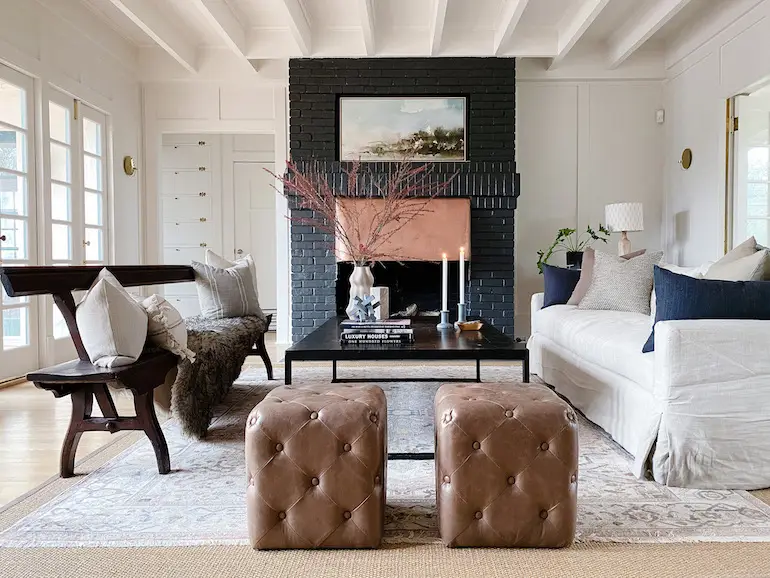
Formal dining and living spaces that were generally play-free zones have been reimagined in ways that bring family together.
“I’m seeing high-end homes that have these fancy spaces and furniture that kids can’t touch, and we’re changing it around and making it more comfortable with round edges, fluffy accessories and warmer tones,” says Sonoma-based interior designer Mia Sandmark.
Game rooms, home bars, gyms and theater rooms are making these spaces more functional for families to use every day versus once in a while.
“I recently turned a formal living room into a game room,” says Sausalito-based designer Elena Calabrese. “We did a swanky bar and added a pool table. It went from a formal living space that they never used to a fun family and entertaining space.”
Entry Spaces Get Organized
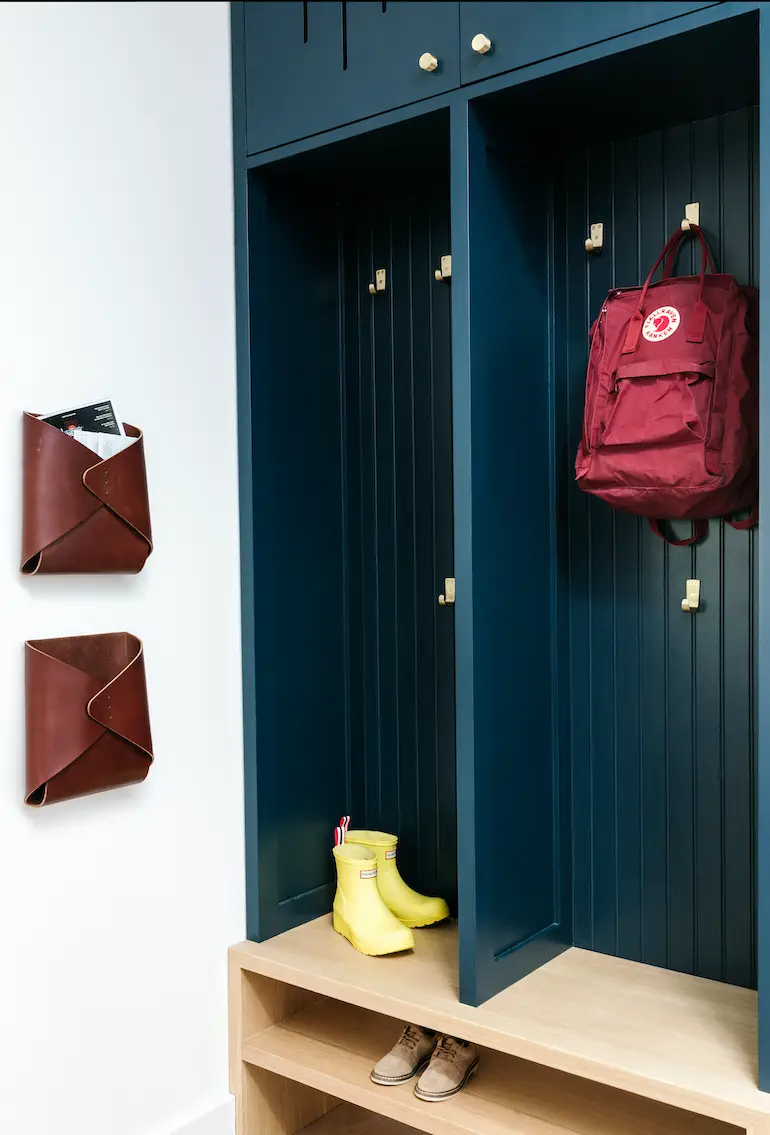
Coming and going can be a chaotic part of the day for families. Designers are looking at ways to ease hectic mornings and make entryways tidy and functional.
“We get a lot of requests for built-in entryway storage. Everyone wants an organized but attractive drop zone,” adds interior designer Katie Monkhouse, who just opened her new shop, Westpark Home, in San Anselmo.
Hooks, bowls, consoles and containers also make an impact.
“The first things I ask clients are, ‘what does your day look like?’ ‘Which door do you enter?’ ‘What are you carrying with you?’ ‘Do you always have your purse?’ ‘Do you have your keys?’ ‘Do you take your shoes off?’ ‘Where do you hang your coat?’” Sandmark says.
Establishing a routine that your entry design supports can help the whole family follow a system that ensures the entry always looks clean and organized, and ultimately makes the day run smoother.
Storage Is Everywhere
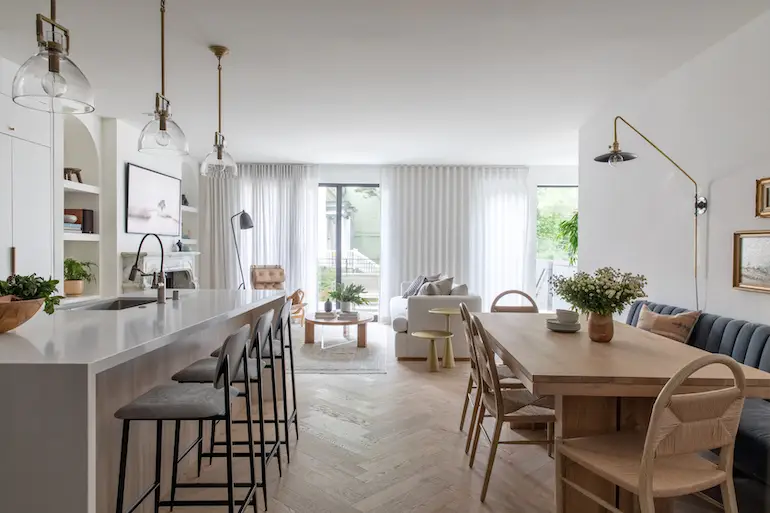
As formal spaces turn casual and families spend more time at home, play spaces are creeping into the main areas. But no one wants a trail of toys scattered around the home.
“We often design built-in cabinetry throughout the home to hide clutter and also give each space a sense of organization,” says San Anselmo-based interior designer Lauren Nelson.
Nelson suggests putting dressers inside closets, appliance garages in kitchens to keep countertops clear, and low cabinets in the family room to store games and toys.
“We’ll design a dining banquette and add craft and art supply storage for kiddos,” Monkhouse adds. “We also tend to give families a few ‘floating’ storage pieces, such as attractive lidded baskets in high-use areas, to make it easy to clean up in a hurry and transport toys between rooms.”
Performance Fabrics FTW
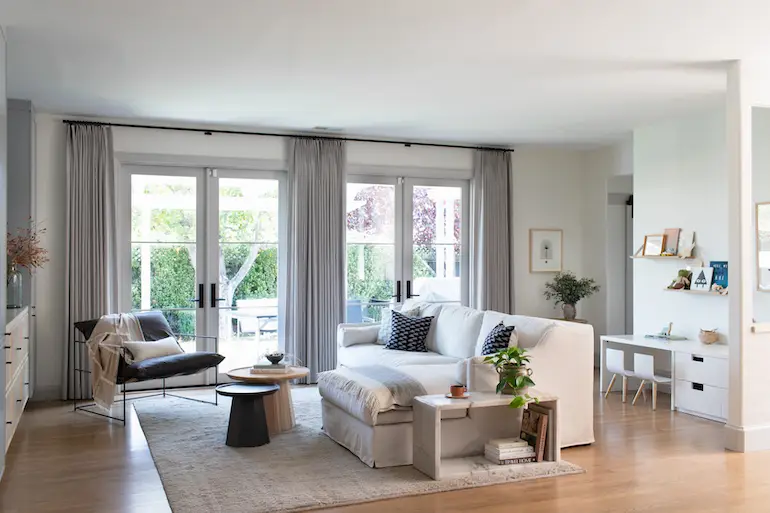
Performance fabrics have come a long way over the last decade. Brands like Perennials, Crypton and indoor-outdoor fabrics are lifesavers in high-traffic, kid-filled homes, Monkhouse says. “Basically, the higher quality and more natural the material is, the easier it is to clean and maintain,” she explains.
While there’s the inclination to choose more affordable sofas and soft goods for fear they’ll eventually be destroyed by rambunctious toddlers, designers agree that you can have nice things at every stage.
“Don’t compromise aesthetic just because you have young kids,” Nelson says. “I’m a believer in buying better quality that will last longer versus buying inexpensive pieces that will end up in landfill in a year or two.” Setting boundaries on where kids can eat and jump and play is key.
“Leather is a family’s best friend,” Sandmark adds. “It’s good for spills, wears beautifully over time and is an environmentally responsible choice because of how long it lasts.”
Sustainability Matters Even More
Design that keeps the environment top-of-mind has, until now, been merely a nice-to-have, but Sandmark notes that now there’s more urgency to walk the talk.
“Whenever I started talking about repurposing what my clients already had, I was getting pushback, but now everyone’s really into it,” she observes. “Keeping design choices environmentally conscious is a trend that will only keep getting stronger.”
Sandmark offers some upcycling tips: Give existing furniture new life by painting or staining, adding new hardware and reupholstering. Rit Dye is an easy way to revitalize an old cushion cover. “Rit Dye Taupe is my favorite, and it will change any wild fabric color to a more muted, modern version,” she says.
Choosing natural wood furniture is another way to do right by the Earth. “We usually have dining tables made locally here in Marin, always in solid wood, so they can be sanded down and refinished many times,” Monkhouse says.
The Kid’s Room Matures
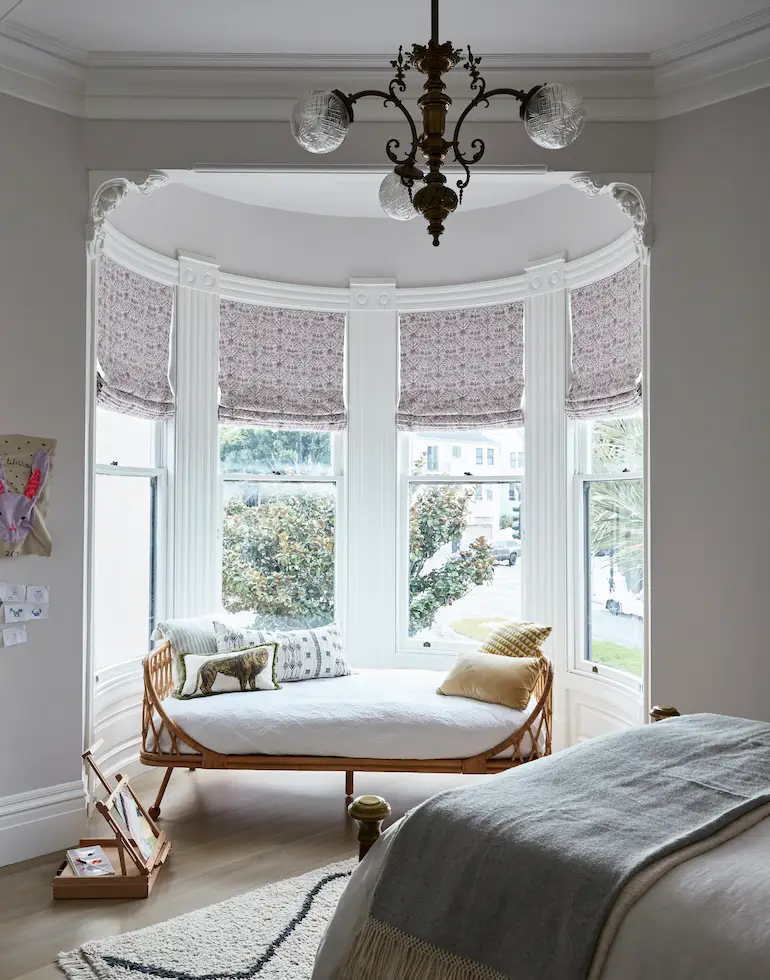
There’s no need to sacrifice design in the kid’s room. To ensure your child’s bedroom stands the test of time, opt for furniture that doesn’t scream “kid’s room,” Monkhouse says.
“We encourage clients to skip the toddler bed—unless it’s a convertible crib,” she says. “It’s always best to go with the largest bed that will fit while leaving room for play.”
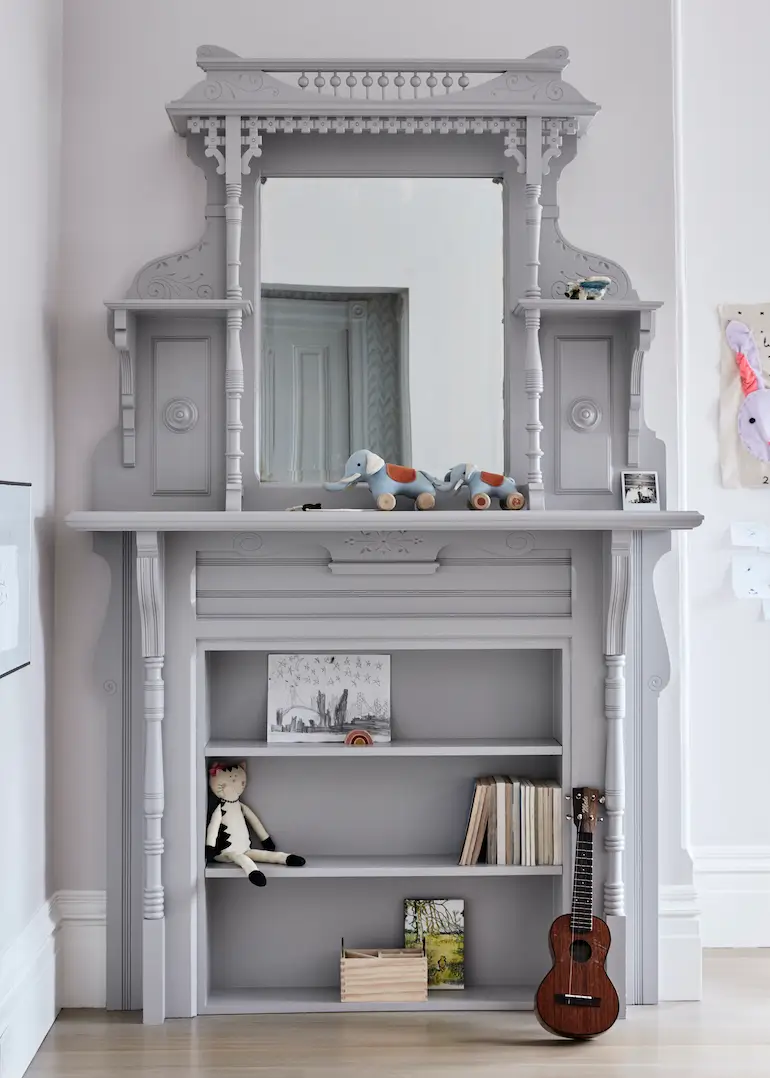
Also, never go too bright or primary on the colors. “If a kid requests a color like pink, we go with the most organic version of the color, like a blush or a light peach tone that we know they won’t grow out of,” Monkhouse says.
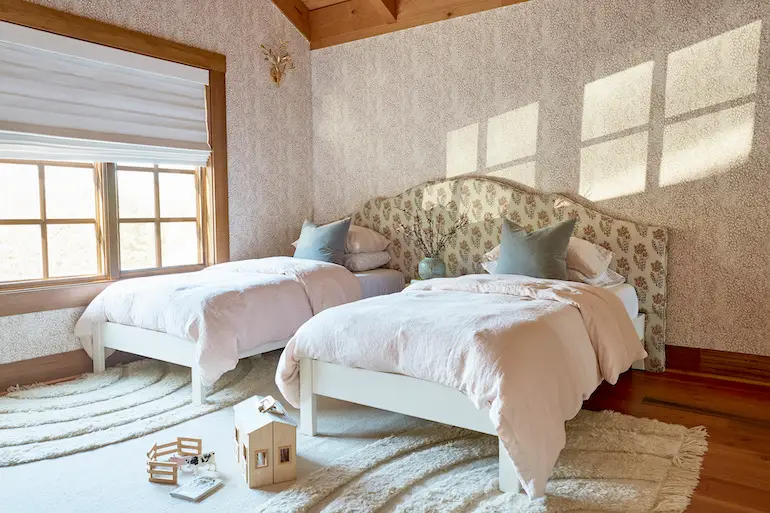
Outdoor Spaces Get Tricked Out
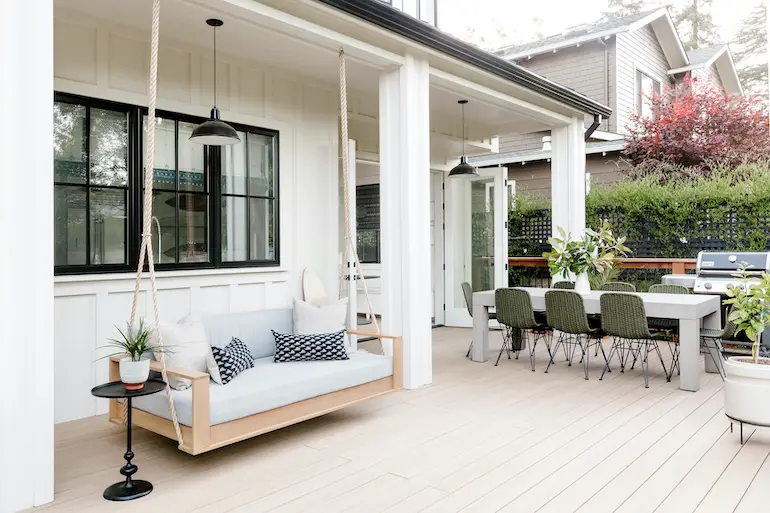
Last year, one Marin family went all-out on turning their backyard into a staycation oasis, with a soccer field, a basketball court, a jacuzzi and a new deck.
“In this same project, the garage was turned into an accessory dwelling unit (ADU) and a gym,” Calabrese says. “To me, it was the ultimate Covid-19 remodel.”
ADUs can serve as home offices, guest rooms, gyms and more. Finding distinct spaces, even outside, has become a commodity as families crave more privacy when they’re all home together.
“Five years ago, it was ‘let’s blow out all the walls and have one big floor plan,’” Calabrese says. “Now it’s ‘wait, I need a home office where I can close the door. I need a gym. I need a place for my Peloton.’”
More from SPACES:
- Healthy Home Design: From Meditation Rooms to Energizing Color Palettes, Here Are 5 Ways Your Interiors Can Boost Wellness
- This Big Sky, Montana Home Is Marvelously ‘Mountain Modern’
- A Luxe Remodel Celebrates the Views From This Marin County Hillside Home
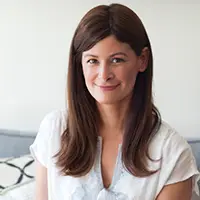
Theresa Gonzalez is a Bay Area-based writer specializing in interior design and architecture. She is the author of Sunday Sews (Chronicle Books) and has contributed to San Francisco Magazine, San Francisco Chronicle, Visit California and more.
